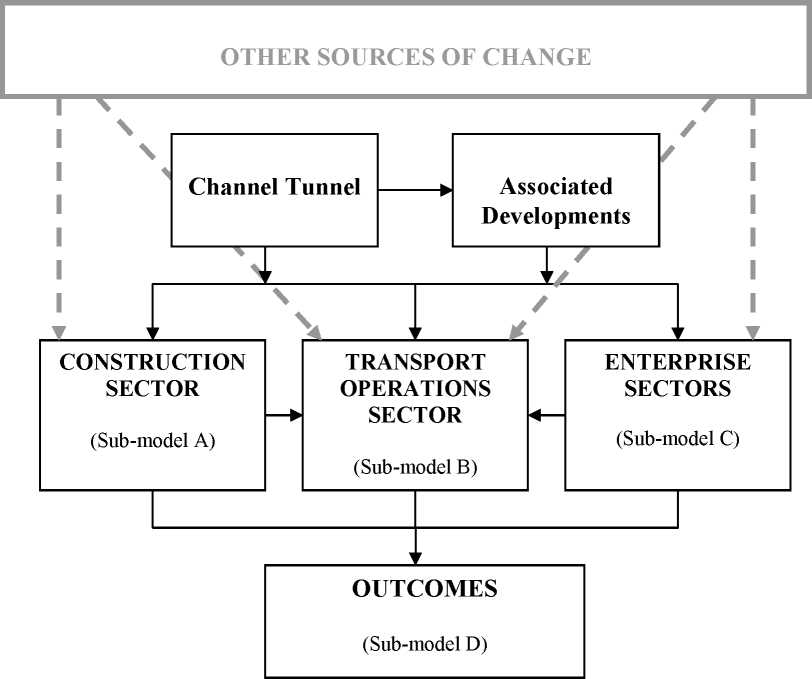as well as changes due to the performance of the national economy. It is also evident
that statistics collected for quite different reasons will seldom permit the researcher to
separate out the individual elements which go to make up aggregate changes.
The overall approach is summarised in Figure 2 which shows the broad structure
within which our analysis has been conducted and identifies a series of sub-models
which examine specific aspects of this.

Figure 2 Overall Model Structure
We have developed four sub-models which deal in turn with: the construction
impacts; the transport operations impacts; the wider economic impacts on enterprises
in the region; and a fourth sub-model which takes outcomes from first three and
identifies both the additive effects of changes (for example by employment sector)
and also the induced and multiplier effects on household incomes, GVA, in-
migration, housing construction, and the provision of services.
In this paper we can only give an overview of the main changes we have identified. It
is also clear that ten years is a relatively short time to expect all the impacts of such a
major project to have an impact and thus we have also tried to look forward to assess
how much some of the major drivers of change will themselves change over the next
ten to fifteen years.
More intriguing information
1. A parametric approach to the estimation of cointegration vectors in panel data2. The name is absent
3. Outsourcing, Complementary Innovations and Growth
4. Globalization and the benefits of trade
5. The name is absent
6. The name is absent
7. Evidence-Based Professional Development of Science Teachers in Two Countries
8. The name is absent
9. The name is absent
10. Towards a Mirror System for the Development of Socially-Mediated Skills